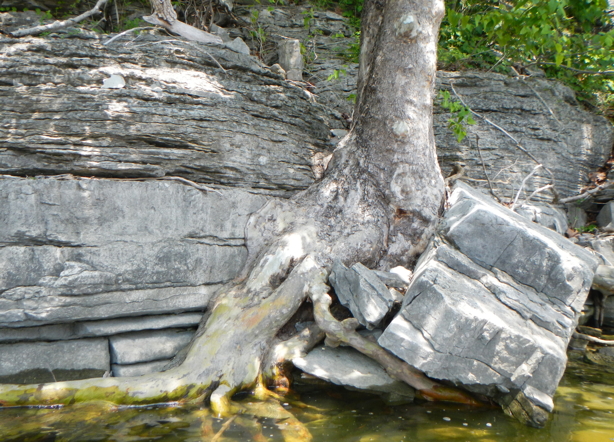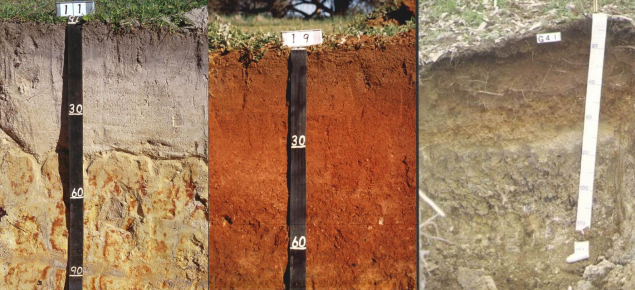Below are some recent photographs of sycamore trees (Platanus occidentalis) in limestone bedrock at Herrington Lake, Kentucky (about37.78o N, 84.71o W). As you can see, the tree roots and trunks exploit joints in the rock, and accelerate weathering both by physically displacing limestone slabs and widening joints by root growth, and by facilitating biochemical weathering along both live and dead roots.

These are some nice examples of root/bedrock interaction, and the general phenomena are not uncommon, though usually much more difficult to see. The Herrington Lake shores also appear to illustrate a process by which the sycamores accelerate weathering and mass movements (other trees are also involved, but Platanus occidentalis seems to be the most common and effective):
1. Plants colonize the exposed bedrock, with roots exploiting bedrock joints.
2. Tree roots accelerate weathering and loosen joint blocks.
3. While the tree is still alive, root growth envelopes rock fragments and the trees provide a physical barrier to downslope transport.
4. When the tree dies, the rock fragments are released downslope.



 One of the oldest traditions in the
One of the oldest traditions in the